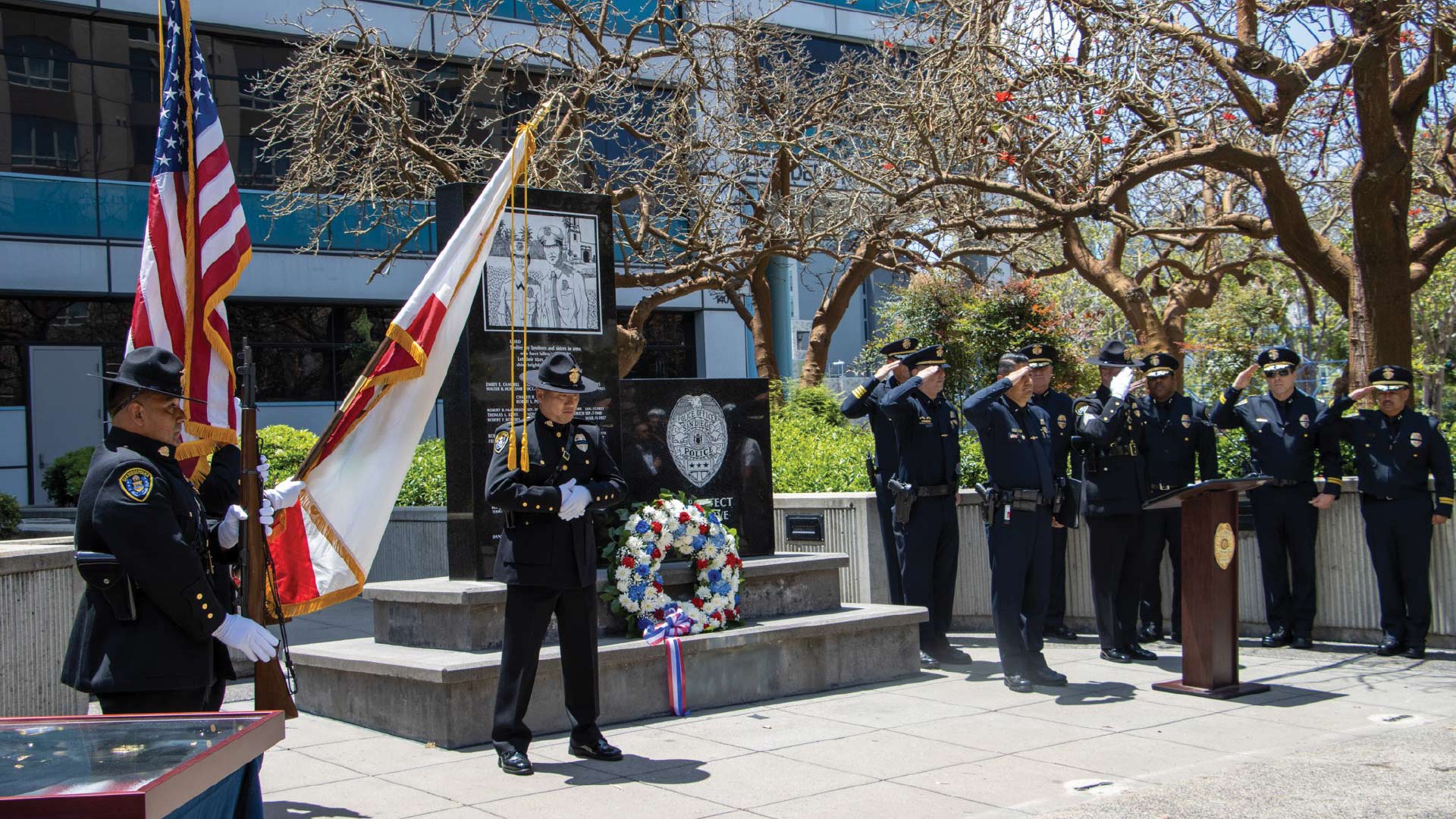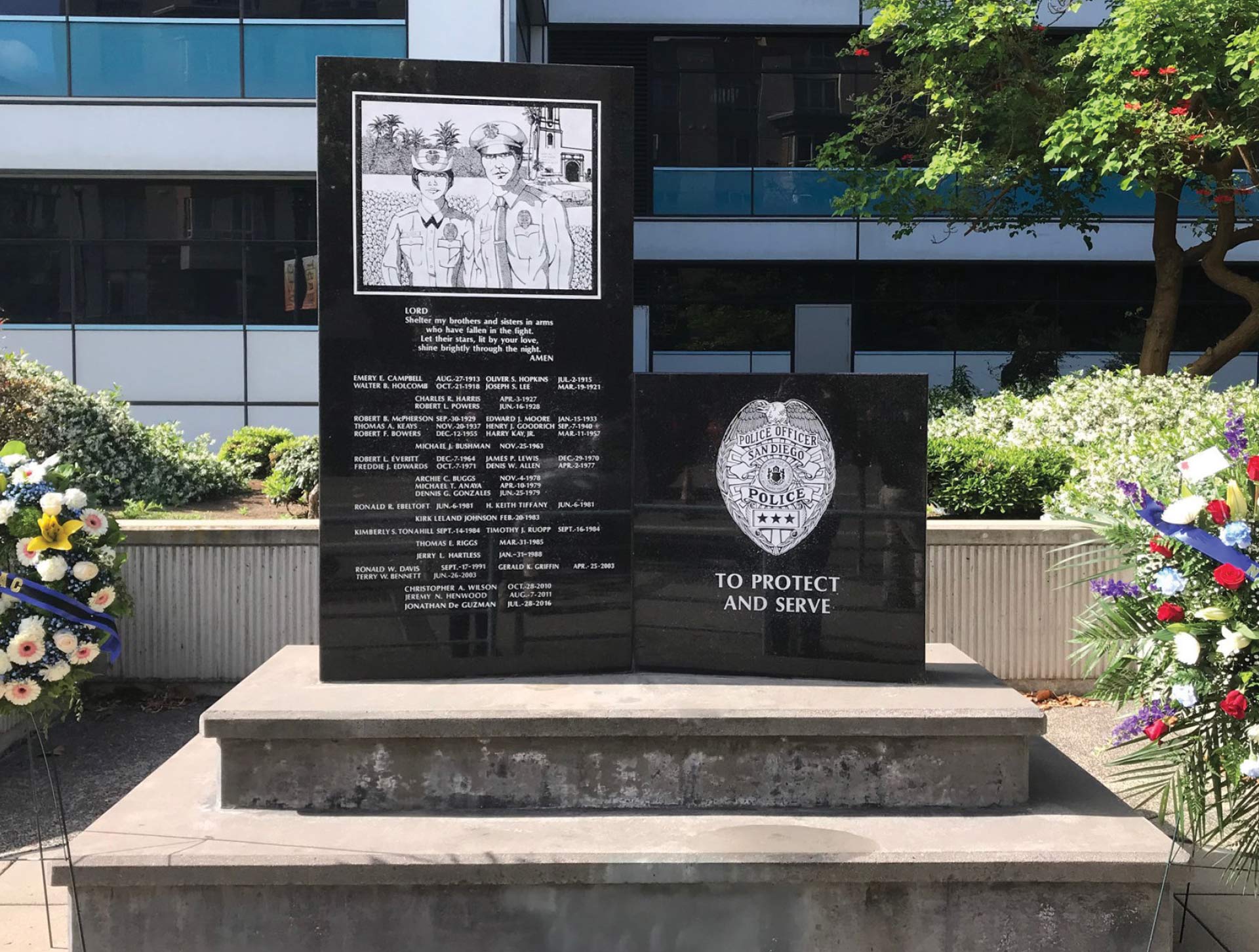
Want to learn more about how our fallen heroes are being remembered? In this series of profiles, we focus on the memorials paying tribute to the sacrifice, dedication and valor of those who gave their all in the line of duty.
 Located in the heart of San Diego, the San Diego Police Museum stands as a testament to the rich and storied 130-plus-year history of the city’s police department. The museum features vintage photos, badges, uniforms and more, but perhaps what truly makes the exhibit special is its memorial, which honors the San Diego Police Department officers killed in the line of duty.
Located in the heart of San Diego, the San Diego Police Museum stands as a testament to the rich and storied 130-plus-year history of the city’s police department. The museum features vintage photos, badges, uniforms and more, but perhaps what truly makes the exhibit special is its memorial, which honors the San Diego Police Department officers killed in the line of duty.
When Steve Willard, vice president of the museum, joined the San Diego Police Department in 1985, the agency was grimly recognized as having “the highest officer mortality rate in the United States, per capita,” he says. The concept behind the memorial evolved organically from that point on, spurred by a desire to pay tribute to those who made the ultimate sacrifice.
“When the memorial was created, one of our goals was to include not only names and dates but also pictures of the officers and details of the actual event,” Willard says. “We wanted people to know who these people were and who they were survived by so that we could really tell their story. We learned early on that if we’re going to stop these deaths from happening, we needed to be very candid about why it happened in the first place.”
The memorial currently includes 46 officers who were killed in the line of duty, as well as four officers from the department who died while serving in the military during wartime.
“We had officers who fought in World War II, the Korean War, the Vietnam War and the War on Terror who never came home,” Willard says. “We decided that because they died in the line of duty for their country and were members of our department that we should recognize them.”
The memorial also serves as a unique place within the San Diego law enforcement community, symbolizing a deep sense of respect for those in blue who gave their all in the line of duty. “The most important role of the memorial is to make sure families’ loved ones are not forgotten,” Willard said. “These officers had their lives stolen from them — they were murdered and are victims of awful crimes. The memorial gives people a chance to stop and reflect on what happened so that we can hopefully make sure this tragedy doesn’t happen again.”
During a recent event, the San Diego Police Historical Association, which sponsors the museum and memorial, took the plaques honoring the officers down from the wall and put each one on an easel for people to view at the San Diego Convention Center. “It ended up being an incredibly powerful exhibit where a significant amount of people stopped and read each and every plaque — there were some real tear-jerkers,” Willard shares.
Each easel included the fallen officer’s badge number, which gave the association the unique opportunity to share a fascinating tale about Emery Campbell, the first San Diego officer killed in the line of duty. “There were two compelling stories about what badge number actually belonged to Campbell — one story said that badge 47 was his, while another said it was actually badge 48,” Willard says. “Because his badge number wasn’t visible in the only photo we had of him, we sent both badges to our crime lab to see if they could find blood on either one, and sure enough, they found blood on badge 48 — it was microscopic on the pin catch, but it was there. That badge is now framed inside the museum.”
As a way to ensure each sacrifice is never forgotten, the San Diego Police Department began awarding every fallen officer’s family with a “very large, beautiful cross,” Willard says. “They came up with the award five or six years ago, but they made it retroactive for everyone who had been killed in duty-related circumstances. What ended up happening was that the department couldn’t locate all the families, so they asked for our help. We’ve been able to find a family member of three officers so far. One of them was an officer’s sister, who told us that she was convinced that everyone had forgotten about her brother. She was so touched and moved that we were able to do this for her family.”
Every year, an annual wreath-laying ceremony is held in San Diego so that members of the community and families of fallen officers can pay tribute to their heroes. For more information about San Diego’s fallen officers, please visit sdpolicemuseum.com.
